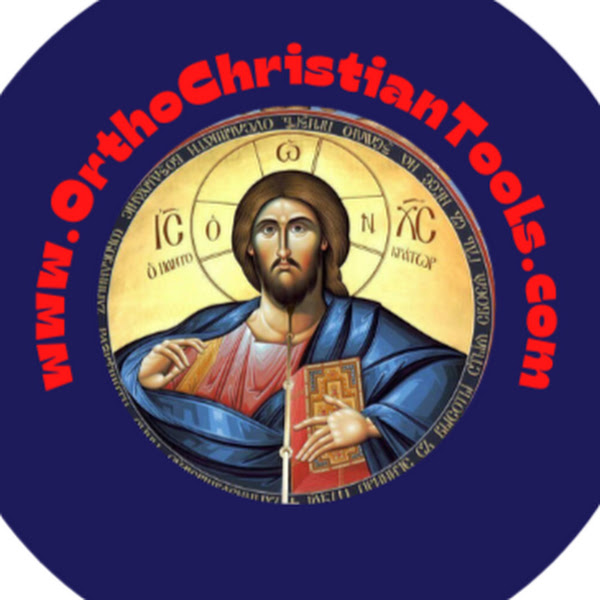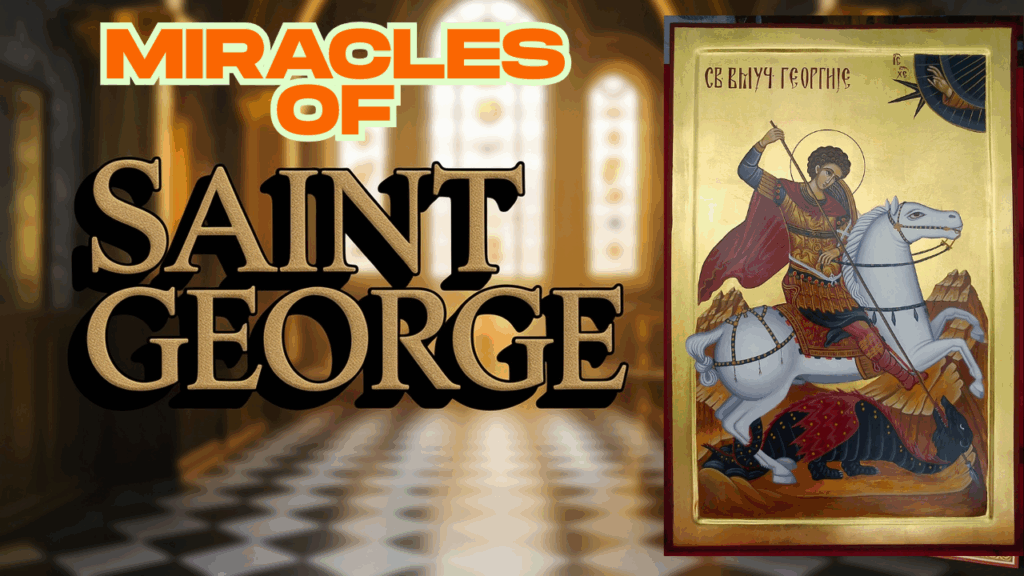What titles don’t we hear for Saint George the Great-Martyr?
He is called “the greatest among the great martyrs,” “chief of the ranks of martyrs,” “renowned for miracles everywhere,” and “swift to help.”
These titles aren’t just poetic—they reflect centuries of miracles attributed to this holy warrior-saint. Even today, through the prayers of Saint George, people around the world experience help, healing, and protection.
Below are true stories of miracles that happened in modern times—witnessed by monks, villagers, priests, and even enemies of the Church. These miracles remind us that the saints are very much alive in Christ and ready to intercede for us.
1. The Novice Who Wasn’t There: St. George Appears on Mount Athos
Mount Athos is known as the Garden of the Theotokos—and Saint George is revered as its guardian. Two of its great monasteries, Zographou and Xenophontos, are dedicated to him.
In a remote kellia under the Pantokrator Monastery, two elderly monks lived a quiet life. One night, they were visited by three men claiming to be pilgrims seeking shelter. A young novice greeted them and led them into the guest room. Then—complete silence.
Hours passed. The “pilgrims” tried to stand but found themselves bound by invisible chains! Their cries woke the monks, who rushed to investigate. When asked how they got in, the intruders cried, “Your novice let us in!”
The monks stared in confusion: “We don’t have a novice.”
The truth came out—these were notorious bandits, including the infamous Stamatis, who had come to rob and murder. But their plan was stopped… by someone. When the monks brought out an icon of Saint George, the bandits trembled: “That’s him! That’s the one who let us in!”
From that day forward, the cell was called “The Kellia of St. George the Appeared (Faneromenos),” and the icon was moved to the main church. Stamatis repented, became a hermit on Mount Athos, and died a righteous monk.
2. The Guardian of Forests: St. George Protects Creation
In the Armenian village of Vank near the Euphrates, Saint George was the local patron. His forest was considered sacred—no tree was to be cut without punishment.
A Turk once entered the grove and chopped a tree. As he left, he saw a rider on a gray horse in a red cloak. Sword raised, the man shouted, “Cut only the dead wood—touch the living trees again, and I will strike you down!”
Terrified, the Turk fled and warned others. But one woman ignored the warning, cut a tree, and was immediately paralyzed. Saint George appeared again, holding her in invisible chains. She remained frozen until she cried out in repentance and vowed never to return. Then—she was freed.
3. The Mysterious Horseman: St. George Karslidis’ Childhood Rescue
Saint George often appears riding a horse—and not just in icons.
One winter, a seven-year-old orphan named Athanasius was lost in the Caucasus mountains. Freezing, starving, and on the edge of death, he cried out to God. Suddenly, a mysterious horseman appeared, lifted him onto his horse, and carried him to safety in the city of Tiflis.
The boy followed the stranger’s instructions, which led him to a monastery—and ultimately, to monastic life. As an adult, he took the name George, in honor of the saint who had saved him.
Today we know him as Saint George Karslidis, one of the 20th century’s great confessors.
4. A Liturgy from Heaven—and St. George Arrives Late
In 1903, a devout Orthodox Arab named Khalil was preparing a cave church in Beit Sahour, near Bethlehem, for Matins. As he arrived, he heard voices—a Liturgy was already in progress.
He entered and was stunned: the Mother of God herself was serving, surrounded by angels.
Suddenly, Saint George entered—wet and breathless.
“Why are you late?” the Theotokos asked.
“Forgive me,” he answered, “I was saving people from drowning at sea who had called upon me.”
Water dripped from his cloak and splashed Khalil’s face. At the end of the Liturgy, the Virgin Mary handed him the antidoron, and the vision vanished.
When villagers arrived later, they found Khalil still wet, still holding the holy bread in his hands.
5. Saved from Execution: Saint George Intervenes in WWII
During the Nazi occupation of Greece, Fr. Charalambos Galanopoulos was imprisoned and sentenced to death along with other villagers.
On the eve of the execution, he dropped to his knees and prayed: “Saint George, save us, and I will give my life to God!”
At that moment, he heard a galloping horse in the air, but could not see the rider. “It’s St. George—I’m not worthy to see him,” he thought.
The next morning, as the execution was about to begin, a powerful young man burst into the prison:
“Release these innocent men—or I will deal with you myself!” he thundered.
The guards fled. The man vanished. Days later, an amnesty was granted. Fr. Charalambos kept his promise, became a monk on Mount Athos, and lived as a spiritual father to many.
6. The Church Reopens—By Order of Saint George
Under Soviet persecution, the Church of Saint George in Samarkand was shut down, and the priest, Fr. Seraphim, was forbidden to serve.
But one day, two military horsemen entered the church courtyard. One approached Fr. Seraphim and said: “Prepare for Liturgy. The church will be reopened today.”
Then, they rode to the city’s executive office. The officer burst into the mayor’s room and commanded: “Open the Church of the Great-Martyr George immediately—or face the consequences.”
Terrified, the chairman obeyed. The church was reopened that very day—May 6, the feast of Saint George.
Later, the mayor asked who this powerful church authority was. Fr. Seraphim showed him photos of various bishops. But none matched.
Then he showed him an icon of Saint George.
The man paled: “That’s him. That’s the one who came to me!”
Saint George, Our Swift Helper
These are not mere legends. These are documented miracles, passed down in Orthodox monasteries, villages, and families. They show us what happens when faith meets divine power, and how ready the saints are to help us when we cry out in prayer.
Whether defending forests, saving lives, or reopening churches—Saint George remains “swift to help” and “renowned for miracles everywhere.”
Let us call on him with faith—especially in times of danger, despair, and darkness.
📅 His feast day is celebrated on May 6

